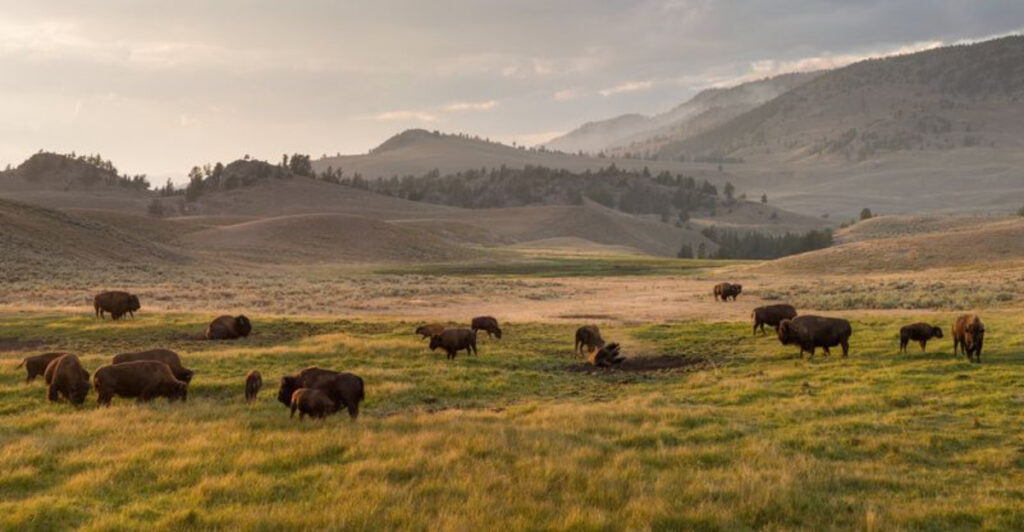Yellowstone National Park stands as a crown jewel in America’s natural heritage. Established in 1872 as the world’s first national park, this magnificent wilderness spans over 2.2 million acres across Wyoming, Montana, and Idaho. From erupting geysers to roaming bison herds, Yellowstone offers visitors a glimpse into a landscape shaped by powerful geological forces and protected for generations to enjoy.
1. World’s First National Park
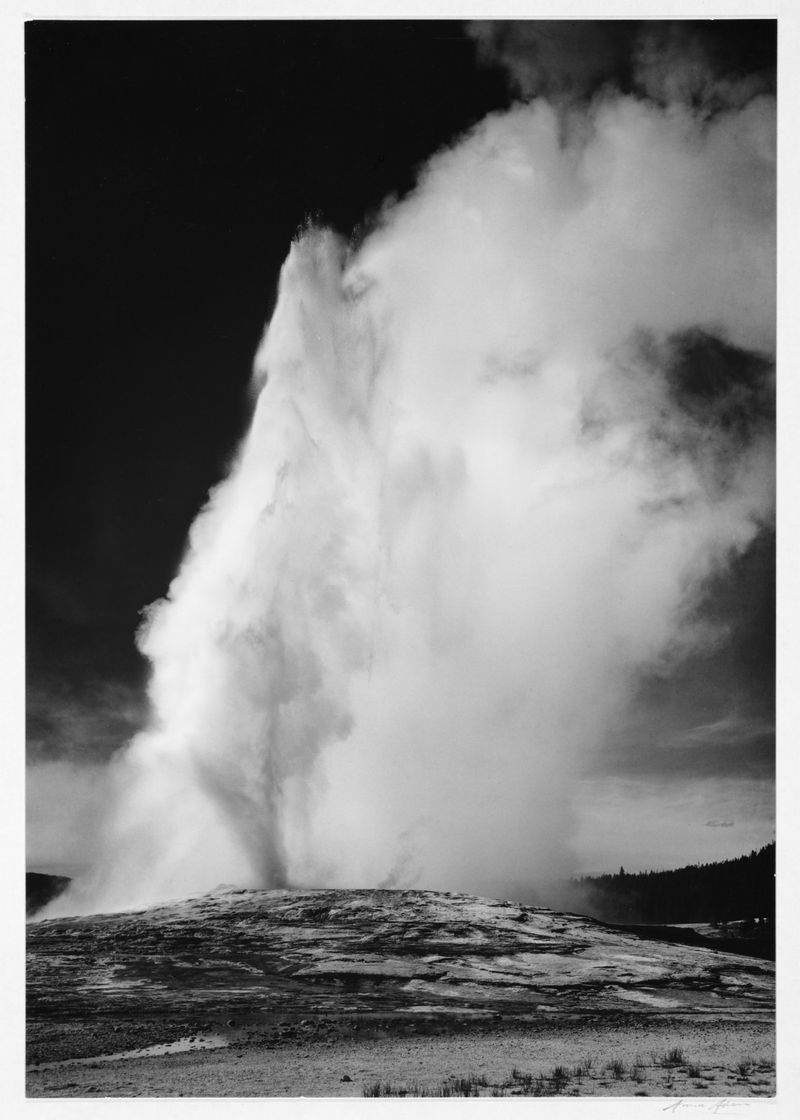
March 1, 1872 marked a revolutionary moment in conservation history. President Ulysses S. Grant signed legislation creating Yellowstone, not just America’s first national park, but the world’s.
This bold decision preserved this extraordinary landscape “for the benefit and enjoyment of the people.” The concept spread globally, inspiring over 4,000 national parks worldwide today. Yellowstone essentially launched an entire movement dedicated to protecting natural wonders.
2. Sitting Atop a Supervolcano
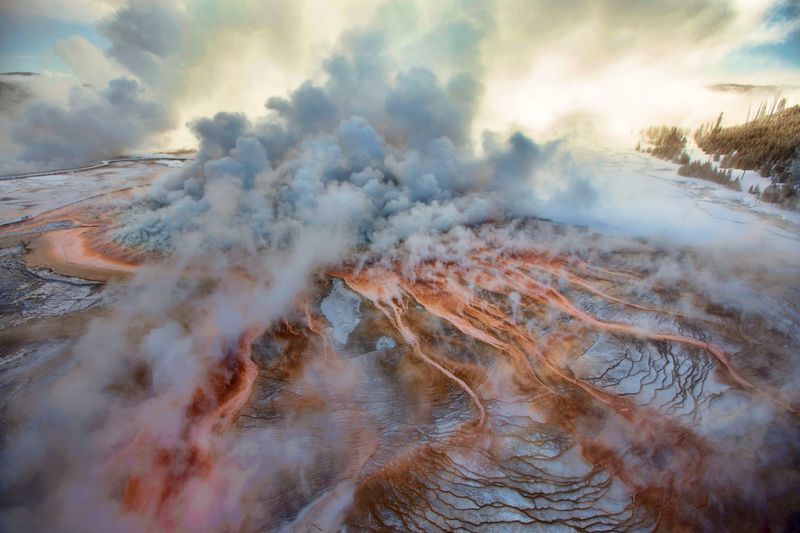
Beneath your feet when visiting Yellowstone lurks one of Earth’s largest volcanic systems. This isn’t your average volcano—it’s a supervolcano capable of eruptions thousands of times more powerful than Mount St. Helens.
Scientists monitor constant activity underneath the park. The last major eruption occurred approximately 640,000 years ago, blanketing much of North America in ash. Don’t worry though—geologists don’t expect another catastrophic blast anytime soon!
3. Geyser Capital of the World
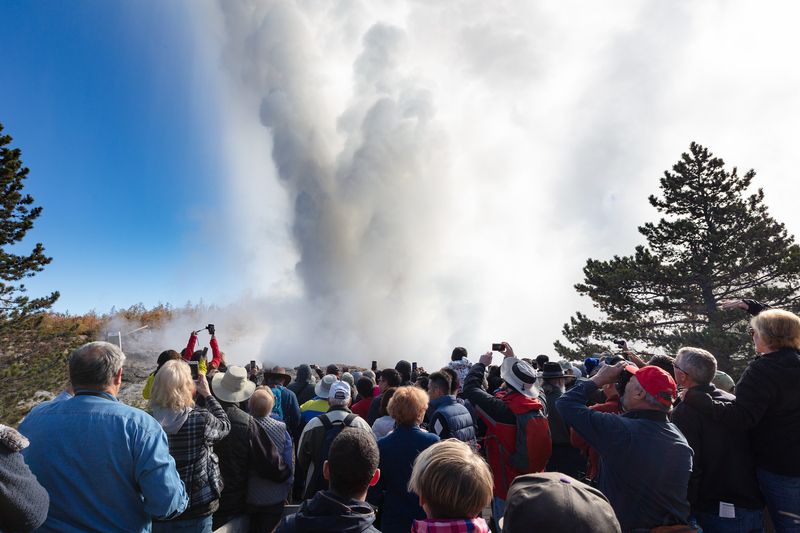
Around the globe, approximately 1,000 geysers exist—and Yellowstone claims over half of them! These spectacular eruptions occur when underground water heats to the boiling point and bursts upward through narrow fissures.
Old Faithful might be the celebrity, erupting roughly every 90 minutes, but Steamboat Geyser actually holds the height record. When active, its water column can rocket an astounding 300+ feet skyward, dwarfing Old Faithful’s modest 106-184 foot displays.
4. Three-State Wonder
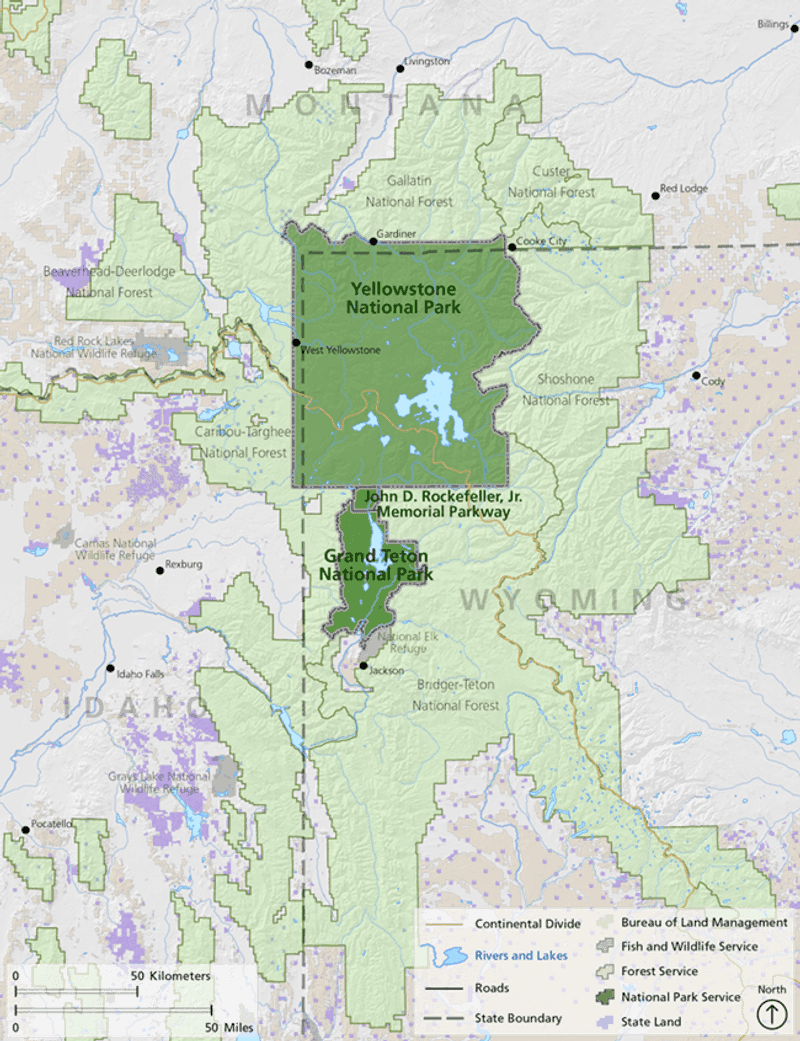
Yellowstone refuses to be confined by state lines! While 96% of the park sits in Wyoming’s northwest corner, Montana claims 3% along the northern edge, and Idaho holds just 1% of the western boundary.
This massive wilderness spans 2,221,766 acres—larger than Rhode Island and Delaware combined. The park’s immense size helps protect complete ecosystems rather than isolated fragments. Wildlife roams freely across these invisible political boundaries, following ancient migration routes.
5. America’s Original Bison Sanctuary
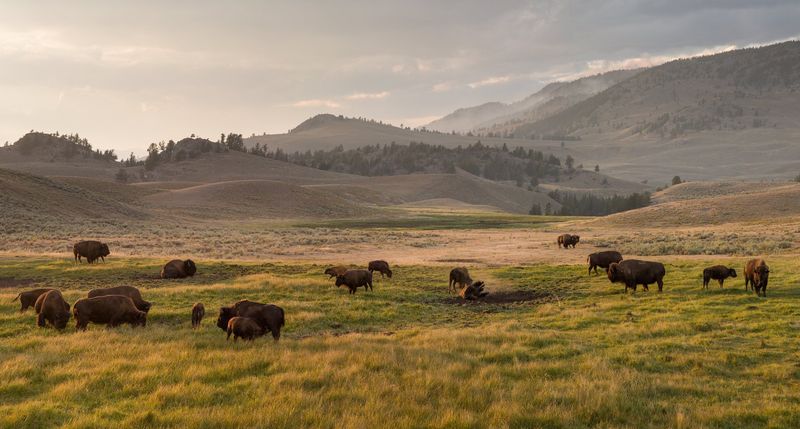
By 1902, hunting had reduced Yellowstone’s once-mighty bison population to just 23 animals. From this precarious edge of extinction, careful conservation efforts helped the herd rebound to today’s 5,000+ individuals.
These massive beasts—weighing up to 2,000 pounds—now freely roam the landscape as they have for thousands of years. Nowhere else in the lower 48 states have bison existed continuously since prehistoric times. Their presence represents one of America’s greatest wildlife recovery stories.
6. Nature’s Vivid Paint Palette
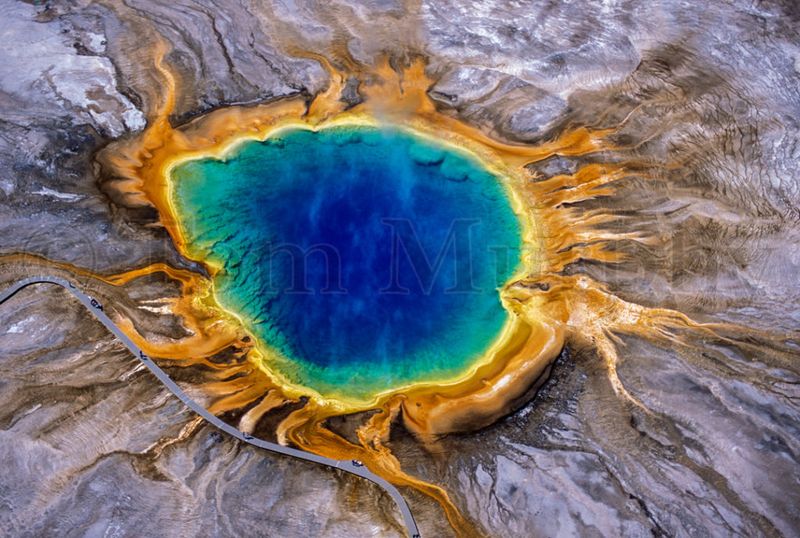
Grand Prismatic Spring stretches 370 feet across—larger than a football field and deeper than a 10-story building! Its mesmerizing rainbow rings aren’t artistic magic but rather living microbe communities, each thriving at specific temperatures.
The cooler outer edges host orange and red bacteria, while the scalding 160°F center appears deep blue due to water’s light-scattering properties. Nearby, bubbling mud pots create bizarre sounds as gases escape through thick, acidic mud. The park’s thermal features essentially form a natural laboratory for extremophile research.
7. America’s Wildest Wildlife Sanctuary
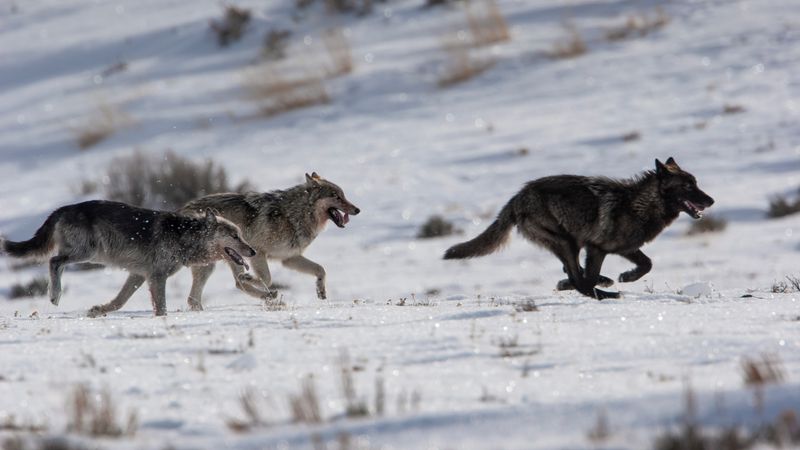
Yellowstone hosts the largest concentration of mammals in the lower 48 states. Beyond famous bison and bears, the park shelters 67 mammal species, including elusive wolverines, lynx, and the once-extinct gray wolf.
Reintroduced in 1995 after a 70-year absence, wolves triggered a remarkable ecological rebalancing. Their presence changed elk behavior, allowing willow and aspen to recover, which in turn benefited beavers and songbirds. This cascade of positive changes demonstrated how a single species can transform an entire ecosystem.
8. The Other Grand Canyon
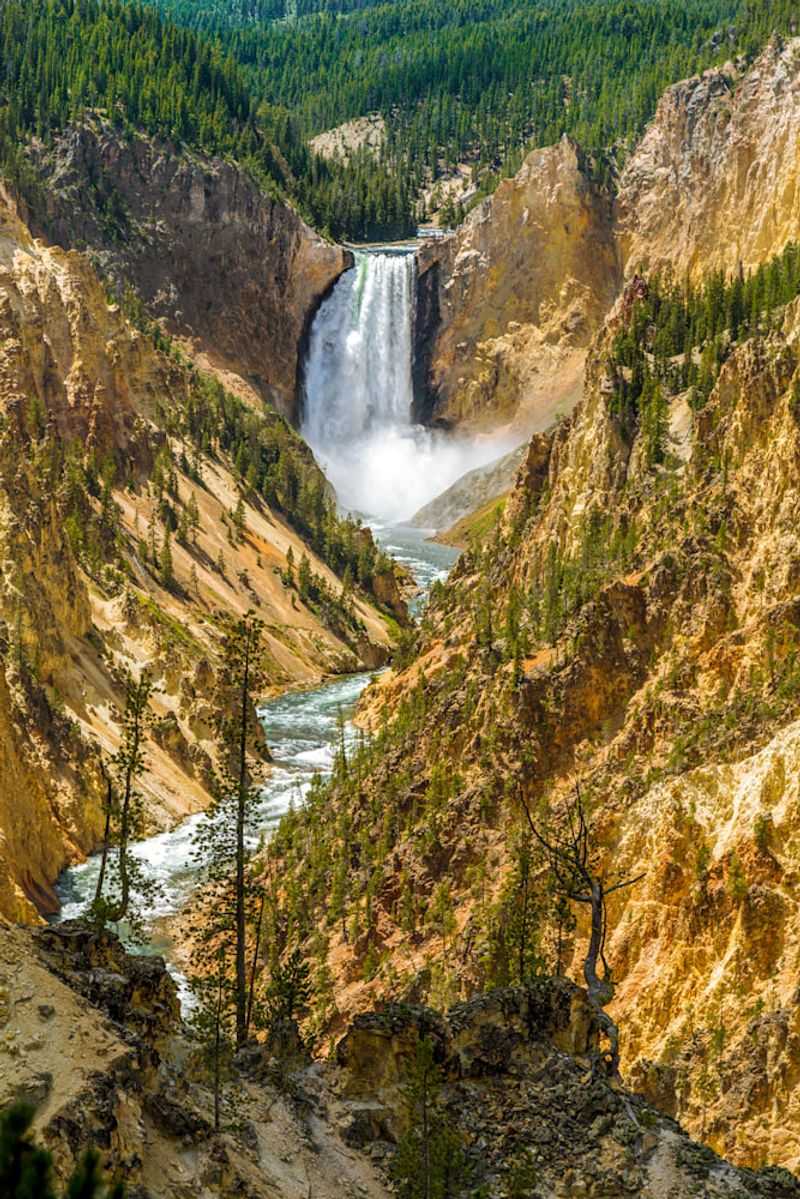
Most visitors are stunned to discover Yellowstone has its own Grand Canyon! This 20-mile-long, 1,200-foot-deep chasm wasn’t formed by glaciers but by the Yellowstone River carving through rhyolite rock weakened by hydrothermal activity.
The canyon walls display a mesmerizing palette of pink, yellow, and orange hues from iron compounds. Lower Falls plunges 308 dramatic feet—nearly twice the height of Niagara Falls! Artists Point offers perhaps the most photographed vista in the entire park, capturing this magnificent waterfall framed by colorful canyon walls.
9. Earth’s Restless Surface
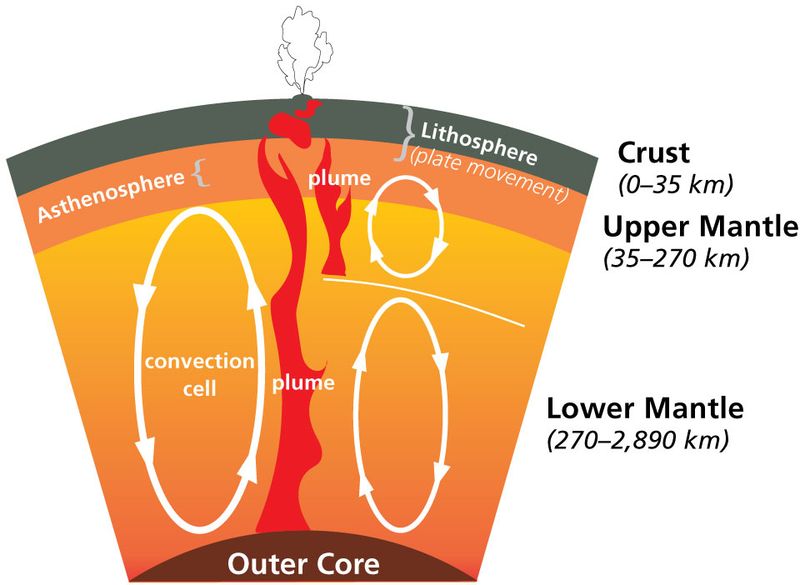
The ground beneath Yellowstone never truly rests. Each year, 1,000-3,000 earthquakes shake the park, though most register below 3.0 magnitude—too weak for visitors to notice.
This constant seismic activity reflects the dynamic forces below. The landscape itself breathes—rising and falling as magma shifts beneath. Between 2004 and 2010, parts of the Yellowstone caldera rose nearly 10 inches! Scientists monitor these movements carefully, using them to better understand the complex volcanic system powering the park’s geothermal wonders.
10. Traffic Jams of the Wild Kind
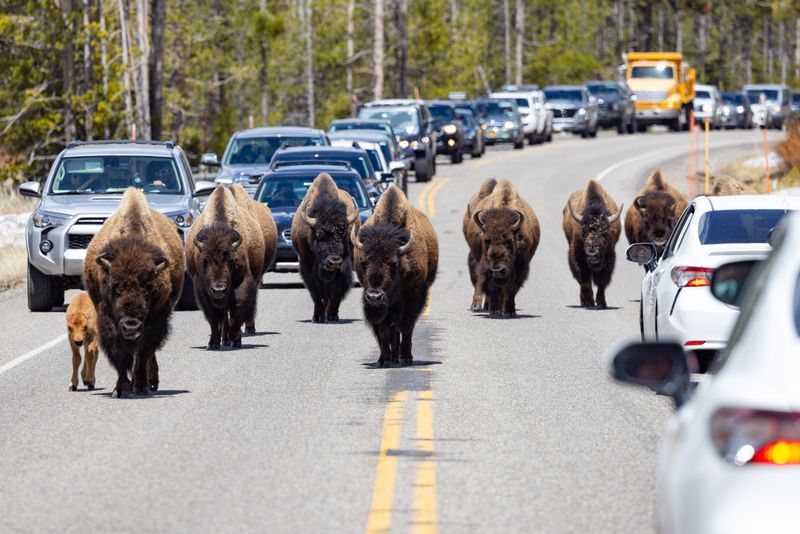
Only in Yellowstone will you find traffic backed up because a 2,000-pound bison decided the road makes a convenient walking path! These massive creatures move at their own pace, creating what locals affectionately call “bison jams.”
Rangers advise staying at least 25 yards from these unpredictable animals. Despite their lumbering appearance, bison can sprint at 35 mph—faster than most humans! Every year, several visitors are injured by ignoring this safety guidance. Remember: these aren’t domesticated cattle but wild animals deserving respect and space.
11. Hiker’s Paradise
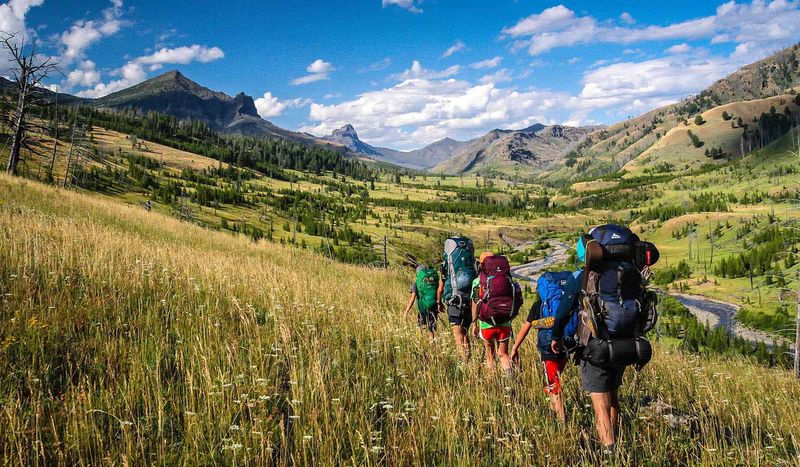
Beyond the boardwalks and roads lies a vast wilderness few visitors ever explore. Yellowstone offers over 1,000 miles of trails—enough to hike from Chicago to New Orleans!
Options range from accessible lakeside strolls to challenging backcountry expeditions. Brave adventurers can access 293 designated backcountry campsites by permit. The Continental Divide Trail winds through the park’s southwestern section, attracting long-distance hikers tackling the 3,100-mile journey from Mexico to Canada.
12. Nature’s Spectacular Water Show
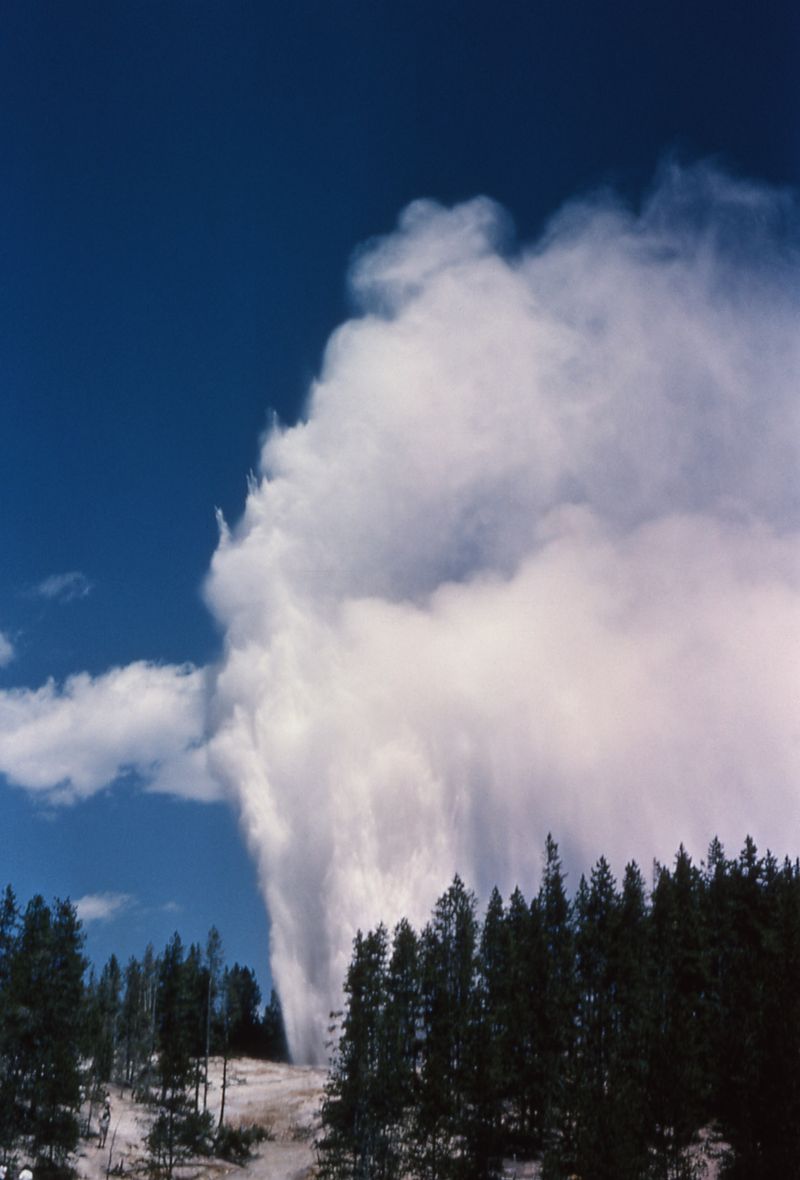
Steamboat Geyser remained dormant for decades before roaring back to life in 2018. When erupting, this temperamental giant launches water three times higher than Old Faithful—over 300 feet skyward!
Unlike predictable Old Faithful, Steamboat follows no schedule. Eruptions might occur days or years apart. The initial blast sounds like a jet engine, sending tremors through nearby ground. Water phase lasts 3-40 minutes before transitioning to a deafening steam phase that can continue for days. Lucky visitors witnessing a full eruption experience nature’s most dramatic geyser display.
13. America’s Highest Alpine Lake
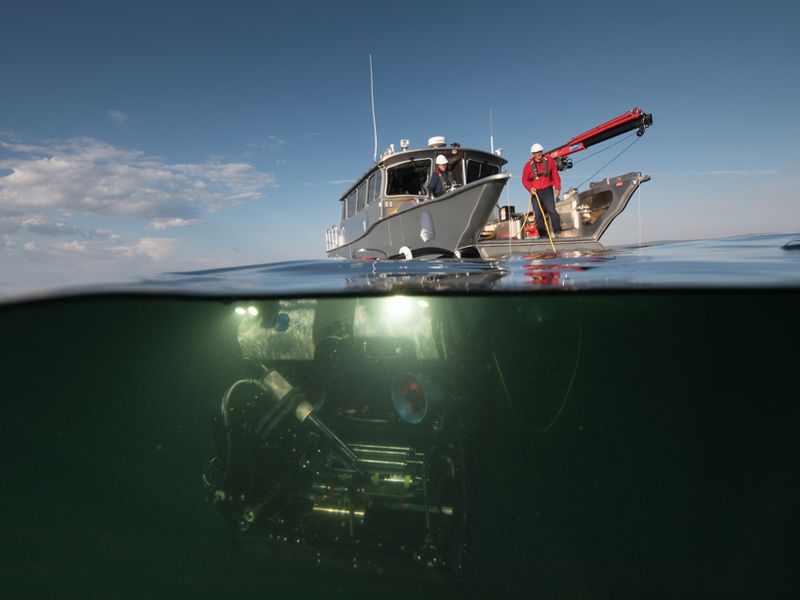
Yellowstone Lake appears deceptively normal until you consider its extreme elevation. At 7,733 feet above sea level, it ranks as North America’s largest high-elevation lake, covering 132 square miles with 110 miles of shoreline.
Winter transforms this massive body of water into a frozen landscape, with ice reaching three feet thick. Beneath the surface lies another surprise—active geothermal vents and underwater geysers! Researchers using submersibles have discovered bizarre hydrothermal features, including spires reaching 20 feet tall on the lakebed.
14. Where Wildlife Outnumbers People
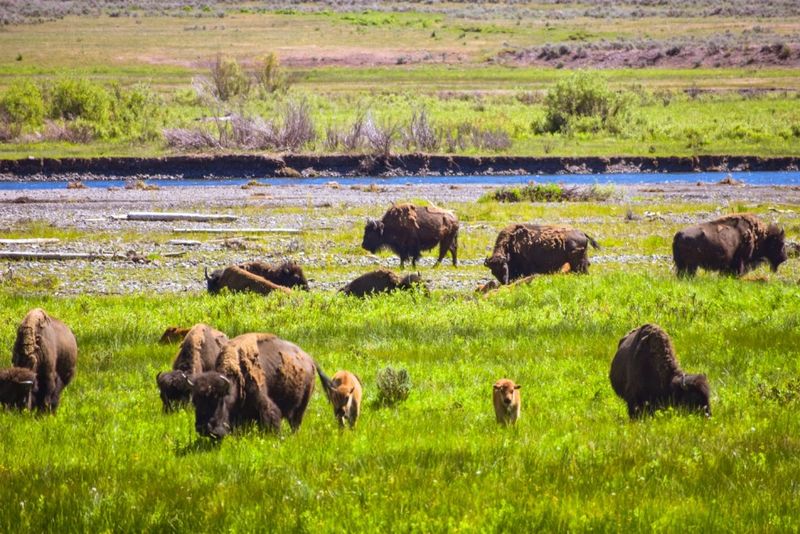
During peak summer months, Yellowstone hosts 40,000+ daily visitors. Yet even then, wildlife outnumbers humans! The park shelters approximately 5,000 bison, 10,000-20,000 elk, 500 bears, 300+ wolves, and countless smaller creatures.
Dawn and dusk offer prime wildlife viewing opportunities in Lamar Valley, nicknamed “America’s Serengeti.” Patient observers might spot river otters playing along streams, bald eagles soaring overhead, or elusive mountain lions stalking prey. This remarkable biodiversity exists because Yellowstone protects entire ecosystems rather than isolated species.
15. A Landscape in Constant Change
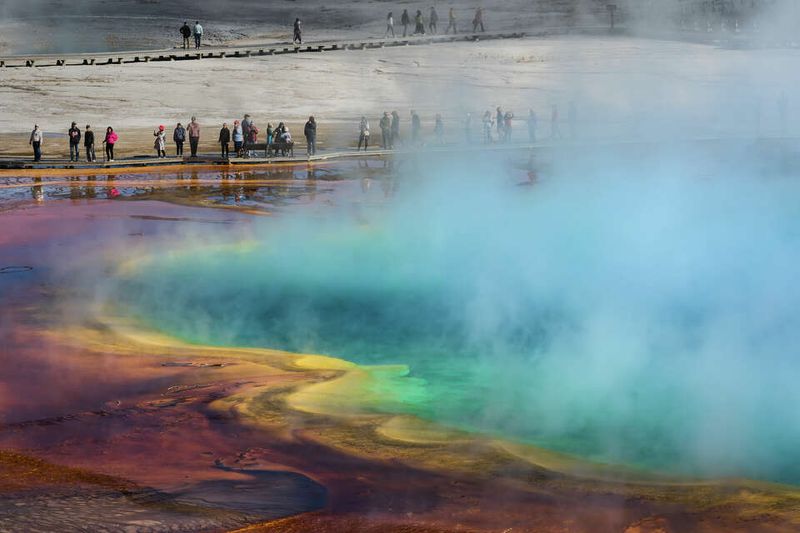
Yellowstone’s landscape transforms dramatically before visitors’ eyes. In 2018, Ear Spring geyser suddenly erupted after 60 years of dormancy, launching decades of coins and trash 30 feet skyward—a startling reminder of why throwing objects into thermal features is prohibited.
New thermal areas regularly appear. In 2019, satellite imagery revealed a previously unknown thermal zone killing trees and creating new hot springs. The ground itself shifts—sometimes rising inches yearly as magma moves below. This dynamic environment reminds us that despite human timekeeping, Yellowstone follows its own geological clock.

